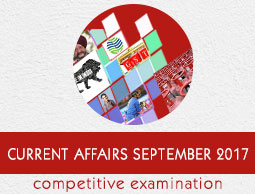
- Appointments
- Awards
- Books & Authors
- Committees
- Deaths
- Defence
- Economic
- Environment
- Finance
- Important Days
- International
- Miscellaneous
- National
- Persons in NEWS
- Places in NEWS
- Regional
- Reports
- Resignations & Retirements
- Science & Technology
- Sports
- September 2017 - Exams Resources
- Current Affairs - Quiz
- Current Affairs - Test
- Current Affairs - PDF
Current Affairs Sep 2017 - Technology
News 1 - PSLV-C39 Flight Carrying IRNSS-1H Navigation Satellite Unsuccessful
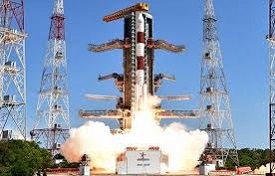
The Polar Satellite Launch Vehicle, in its forty-first flight (PSLV-C39), was supposed to launch IRNSS-1H, the eighth satellite of the Indian Regional Navigation Satellite System (IRNSS) into a Sub-Geosynchronous Transfer Orbit (Sub-GTO).
Launch of PSLV-C39/IRNSS-1H, Scheduled on Aug 31, 2017 from Satish Dhawan Space Centre, SHAR, Sriharikota was unsuccessful. All the flight events took place exactly as planned, except heat shield separation. This resulted in satellite separation occurring within the heat shield. The satellite is inside the heat shield resulting in the unsuccessful mission.
News 2 - Unicity launched worlds first ever Genomeceuticals range of products in India
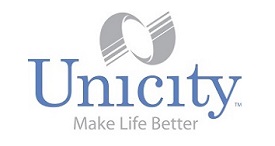
Unicity International has launched world's first ever Genomeceutical (gene controlling) range of products to India. Unicity is headquartered in Orem, Utah, United States.
Unicity uses advanced Genomecutical technology in its products to support proper gene expression, which helps maintain healthy body function at their most basic levels. All products marked with Genomeceutical labels, contain compounds from plants with high concentrations of gene-strengthening material.
News 3 - Fifteen genes behind intellectual disabilities identified

Scientists have discovered 15 gene mutation that can cause intellectual disabilities. Researchers from Radboud University Medical Centre in Netherlands found a mechanism in fifteen genes that play a role in the development of intellectual disabilities.
Intellectual disabilities are often caused by a mutation that damages a gene, preventing the associated protein from functioning properly. However, a mutation can also change the function of a gene. As a result, the gene in question acts in a completely different way.
News 4 - TRAPPIST-1 planets likely to have water
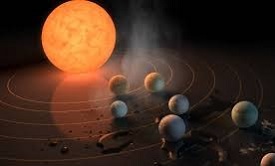
Scientists believe that the Earth-sized planets orbiting the ultracool TRAPPIST-1 dwarf star 40 light-years away may have substantial amounts of water and could be habitable.
An international team of astronomers used the NASA/ESA Hubble Space Telescope to estimate whether there might be water on the seven planets. The results suggest that the outer planets of the system might still harbour substantial amounts of water.
News 5 - Indian Scientists create artificial leaf to make fuel from sunlight

A team of Indian scientists have developed an artificial leaf that can absorb sunlight to generate hydrogen fuel from water. The ultra-thin wireless device can mimic plant leaves to produce energy using water and sunlight.
According to the report, the device consists of semiconductors stacked in a manner to simulate the natural leaf system. When visible light strikes these semiconductors, the electrons move in one direction, producing electric current. This current almost instantaneously splits water into hydrogen - which is considered to be one of the cleanest forms of fuel.
News 6 - Scientists make fuel from air
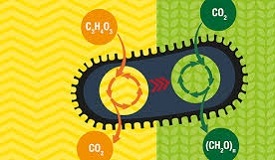
A team of scientists from Cardiff University in the UK have created methanol from methane using oxygen from the air. The new process can help to reduce dependence on fossil fuels and its commercialisation may take much longer.
The transformation begins when CO2 is broken down into oxygen and CO, the latter of which can be combined with hydrogen to make a variety of hydrocarbon fuels. Adding four hydrogen atoms, for example, creates methanol, a liquid fuel that can power cars.
News 7 - NASAs Cassini Spacecraft concluded its 20-year Journey
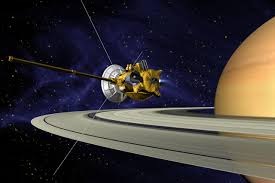
National Aeronautics and Space Administrations (NASA) $3.9-billion Cassini spacecraft concluded its 20-year-long ground-breaking journey. The spacecraft helped scientists better understand Iapetus, solving a centuries-old mystery of why it should be bright on one side and dark on the other.
The Cassini mission is a cooperative project of NASA, ESA (the European Space Agency) and the Italian Space Agency. The Cassini orbiter and its two onboard cameras were designed, developed and assembled at JPL. The imaging operations center is based at the Space Science Institute in Boulder, Colorado.
News 8 - ISRO's Mars Orbiter Mission completed 3 years in orbit

The Indian Space Research Organisation's, Mars Orbiter Mission, MOM, has completed three years in its Martian orbit.
The 450-crore rupees MOM aims at studying the Martian surface and mineral composition as well as scan its atmosphere for methane which is an indicator of life on Mars. ISRO had launched the spacecraft on its nine-month-long odyssey on a home-grown PSLV rocket from Sriharikota in Andhra Pradesh on November 5, 2013.
News 9 - NASA teams up with Russia to put a new space station near the moon

NASA and the Russian space agency Roscosmos have signed an agreement to work together to build a space station somewhere near the moon. The agreement was made during the International Aeronautics Congress in Adelaide, Australia.
The first lunar space station is a part of a long-term project to explore deep space and send humans to Mars. NASA and Roscosmos are two of the major partners in the $100-billion Earth-orbiting International Space Station (ISS).